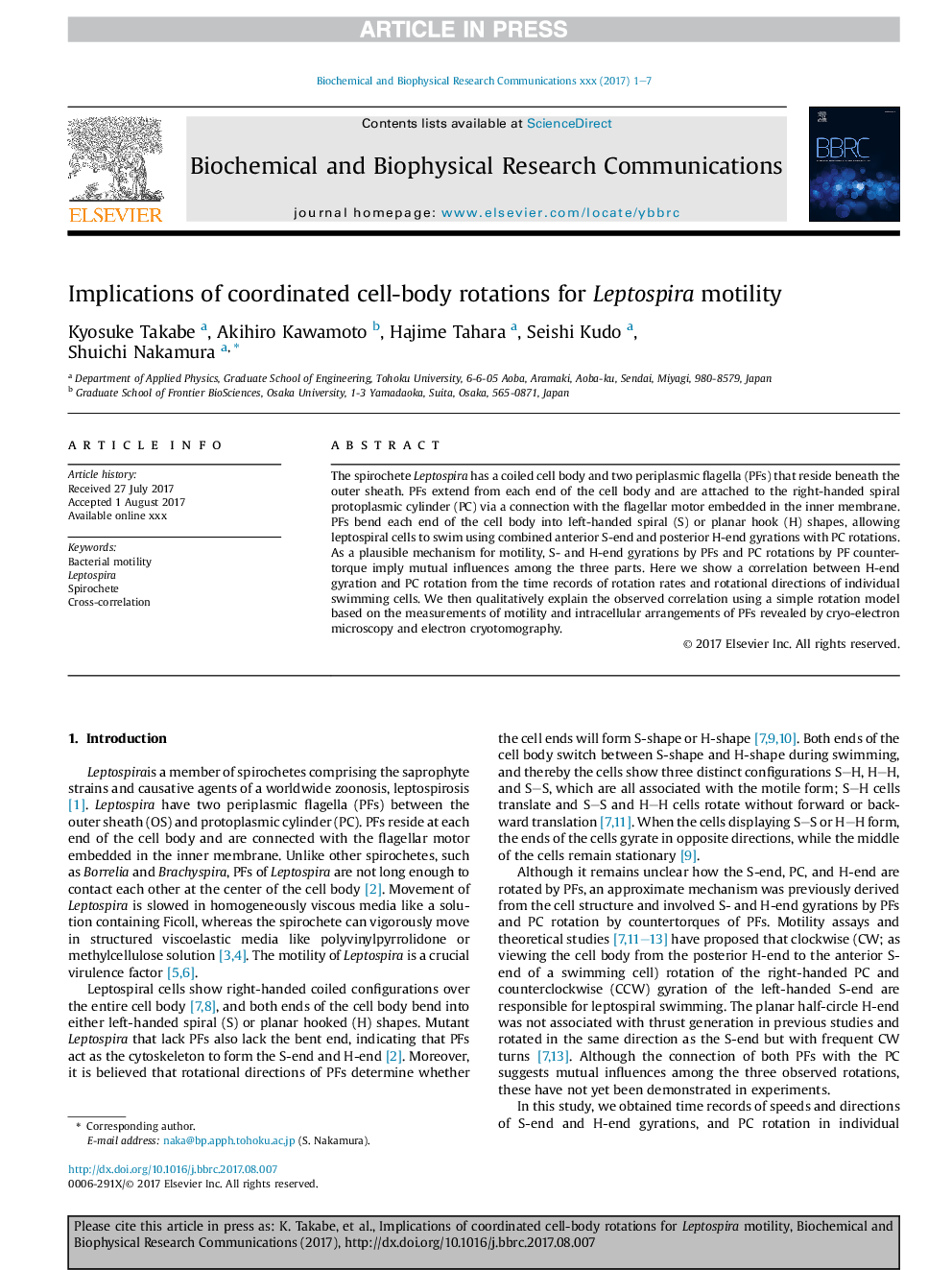| Article ID | Journal | Published Year | Pages | File Type |
|---|---|---|---|---|
| 5504771 | Biochemical and Biophysical Research Communications | 2017 | 7 Pages |
Abstract
The spirochete Leptospira has a coiled cell body and two periplasmic flagella (PFs) that reside beneath the outer sheath. PFs extend from each end of the cell body and are attached to the right-handed spiral protoplasmic cylinder (PC) via a connection with the flagellar motor embedded in the inner membrane. PFs bend each end of the cell body into left-handed spiral (S) or planar hook (H) shapes, allowing leptospiral cells to swim using combined anterior S-end and posterior H-end gyrations with PC rotations. As a plausible mechanism for motility, S- and H-end gyrations by PFs and PC rotations by PF countertorque imply mutual influences among the three parts. Here we show a correlation between H-end gyration and PC rotation from the time records of rotation rates and rotational directions of individual swimming cells. We then qualitatively explain the observed correlation using a simple rotation model based on the measurements of motility and intracellular arrangements of PFs revealed by cryo-electron microscopy and electron cryotomography.
Related Topics
Life Sciences
Biochemistry, Genetics and Molecular Biology
Biochemistry
Authors
Kyosuke Takabe, Akihiro Kawamoto, Hajime Tahara, Seishi Kudo, Shuichi Nakamura,
